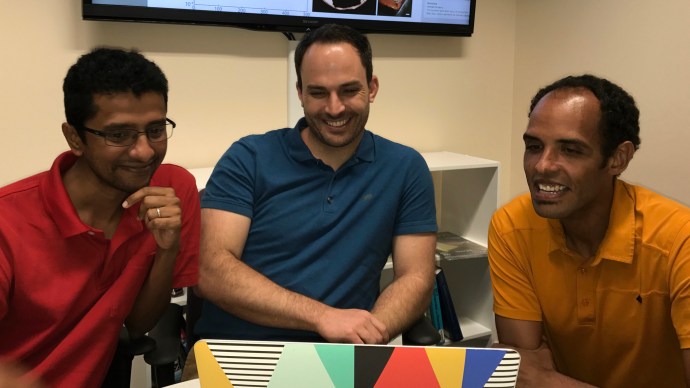A team of university engineers has turned to science and electronics to help restore sight and hearing. Instead of building bionic eyes or digital cochleas, a team at Rice University has built a flat microscope – dubbed FlatScope – that sits on the brain, beaming the world around you directly into your mind.

It may sound like something out of a science-fiction novel – one that would undoubtedly frame it as a means to beam adverts subconsciously into your mind – but it’s actually the results of a DARPA-led project into neural interfaces. Given $4 million over four years, the FlatScope team are working on developing the optical hardware and software to helps restore vision to those who have lost it.
The “microscope” is designed to sit on the brain monitoring and triggering neurons that are modified to be fluorescent when active. This allows the FlatScope to transfer visual information in a digital coded package right into the brain, bypassing the need for eyes entirely.
The premise of such a technology isn’t actually new; these probes already exist as treatments for Parkinson’s disease and epilepsy treatments. However, compared to these current probes, FlatScope aims to capture far more detail, as well as delving deeper into the brain in a quest to uncover how the mind processes sensory inputs.
“State-of-the-art systems have only 16 electrodes, and that creates a real practical limit on how well we can capture and represent information from the brain,” explains Rice engineer Jacob Robinson in a statement on the Rice website. “We’re able to create extremely dense processors with billions of elements on a chip for the phone in your pocket. So why not apply these advances to neural interfaces?”
Robinson’s thinking has led him and his colleagues Richard Baraniuk, Ashok Veeraraghavan and Caleb Kemere to develop FlatScope in the hopes of stimulating potentially millions of neurons in the brain. It’s something that’s currently unheard of in neural science. Compared to other teams involved in the DARPA-led research project, Kemere explains that the team is “taking an all-optical approach where the microscope might be able to visualise a million neurons”.

“The microscope we’re building captures three-dimensional images, so we’ll be able to see not only the surface but also to a certain depth below,” Veeraraghavan explained. “At the moment we don’t know the limit, but we hope we can see 500 microns deep in tissue.”
“That should get us to the dense layers of cortex where we think most of the computations are actually happening, where the neurons connect to each other,” Kemere added.
FlatScope’s technology is actually building upon Baraniuk and Veeraraghavan’s earlier FlatCam technology which eliminated the need for bulky lenses in cameras. This research project would allow FlatCam to become even flatter, sitting between skull and brain without any extra pressure under the skull.
Rice and DARPA’s research project is only in its early stages, and you shouldn’t expect to just waltz into a store and buy this off the shelf in a few years. This is not akin to picking up a new pair of specs when your eyesight is going, since it also requires you to modify your own brain: FlatScope can’t work if it can’t see neurons firing. Thankfully there’s plenty of research available in this area.
“The idea of manipulating cells to create light when there’s an electrical impulse is not extremely far-fetched in the sense that we are already using fluorescence to measure electrical activity,” Robinson explained.
The DARPA-led Neural Engineering System Design (NESD) programme has teams from universities all over America looking at specific neural problems. Rice is working on the three vision-based research projects while a team at Brown University will delve into speech processing. A team at Paradromics is also working on speech restoration via a similar device to the FlatScope.
Disclaimer: Some pages on this site may include an affiliate link. This does not effect our editorial in any way.











